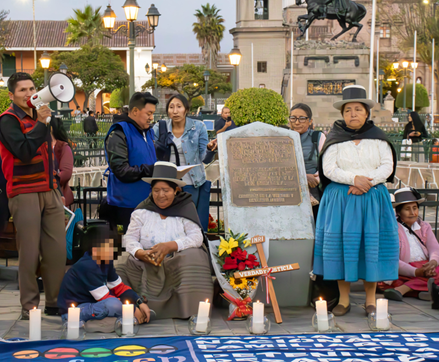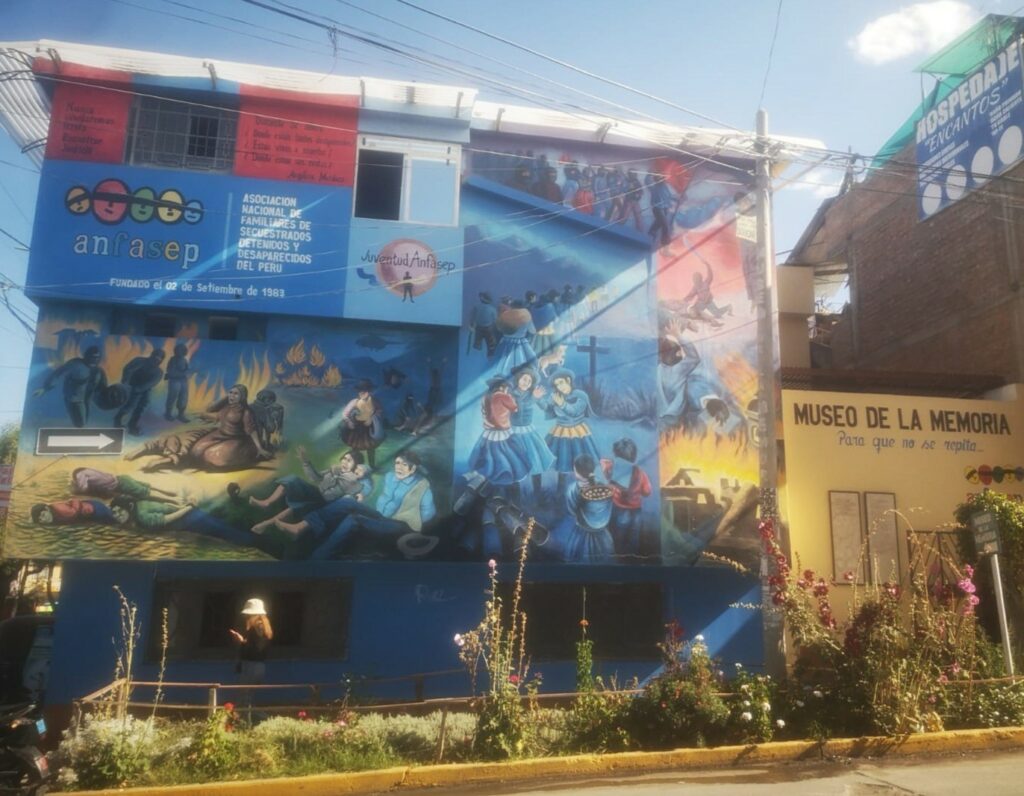Re-imagining reparative pedagogies in Peru
A guest blog post written by Paola Sarmiento Huerta, a PhD researcher in Education at the University of Bristol.
9th June 2025
Re-imagining pedagogies for recent and painful history is essential for advancing reparations in Peru—a demand still urgently voiced by those most affected by it. From 1980 to 2000, Peru faced a devastating internal conflict characterised by terrible human rights abuses committed mainly by both ‘the Shining Path’, a subversive and terrorist organisation, and by the state security forces. This period resulted in approximately 69,000 deaths, 75% of whom were Indigenous.
Yet, teaching this chapter of Peru’s history in secondary schools remains deeply challenging. Silence regarding this topic has been institutionalised within Peru’s education system. For instance, legal and political pressures have discouraged schoolteachers from engaging with the topic in classrooms. At the same time, no national educational policy offers guidance on how this history should be taught, and school history textbooks reduce it to an oversimplified narrative. In this context, most educators choose to omit the subject entirely from classrooms. How, then, can we re-imagine the teaching of Peru’s history of conflict—both in the present and future?
My ongoing doctoral research delves into this question by examining the teaching ideas and practices employed by Peruvian teacher-activists and non-formal educators from a woman-led Indigenous organisation, Anfasep. This study was born out of an urgent need to answer the above question by centring often-overlooked teaching practices emerging ‘from the margins’ of formal education systems. These are educators who have taken on the responsibility of teaching this history themselves, and from which, I believe, we have the duty to listen and learn.
A key foundation of this study is the concept of Reparative Justice in Education. This framework encourages us to trace past injustices, their afterlives in the present, and the possibilities to repair them for a just future in education (Sriprakash et al., 2021, 2023, 2025). Such an approach has helped this research to actively seek out, listen to, and learn from educational practices that can cultivate new understandings and relationships with Peru’s difficult past—practices that work to make things not as they were before.
Between June and November 2024, I conducted fieldwork in Ayacucho, the region most impacted by Peru’s war. In crafting this research, I decided to employ a participatory creative methodology, which has been shaped by principles of collaboration, creativity, care, and radical listening. These principles evolved during the fieldwork, driven by a commitment to create safe spaces for dialogue and meaning-making with educators. By maintaining flexibility, attentiveness, and responsiveness, I wanted to avoid reproducing the injustices that some Peruvian educators have historically faced when addressing this topic in and beyond schools, such as being silenced in their political and educational ideas and fearing accusations of apologising for terrorism when educating about this sensitive topic. I, therefore, sought to use methods that would create spaces for educators to lead the direction and pace of our dialogues and adaptively respond to their affective and intellectual reactions and insights. While I acknowledge that these methodological practices are not without their imperfections, I permanently aspired to maintain the integrity of the study’s reparative approach.
For nearly five months in Ayacucho, I worked alongside local artists to co-develop the research methods that were also informed, more spontaneously, by educators’ input. For instance, the first method, Walking Conversations, arose from a teacher’s suggestion. He expressed discomfort discussing his teaching experiences on this topic collectively and within enclosed spaces. This idea led us to engage in meaningful one-to-one dialogues while strolling through local sites of past-present significance related to Peru’s conflict—such as a memory museum, walls bearing historical graffiti, and spaces where public demonstrations have taken place in response to recent instances of state violence.
The methodological exploration did not stop there. We developed additional methods such as artefact-based pedagogic dialogues and future-oriented storytelling. In the former, educators brought teaching objects as entry points to explore how they currently teach this history in education spaces—either within school classroom or public spaces. Future-Oriented storytelling invited educators to collaboratively envision how this difficult history could be taught in the future, drawing inspiration from ancient Indigenous art forms from Ayacucho used to document communities’ collective history.
As I finalise the analysis of data generated with these educators, one thing has become clear: these Peruvian grassroots educators are actively crafting teaching practices that hold the potential to repair. For instance, non-formal educators share their own histories of the conflict through immersive oral and visual forms of storytelling grounded on Indigenous knowledge systems, such as singing their testimonies in public spaces mixing Quechua and Spanish. I attended several of these educational gatherings as a public learner, and can personally attest the relevance of their work. These educators’ practices are contributing to break the historical silences around this past and cultivating a radical solidarity among audiences. At the same time, I recognise how much more I still need to understand from their practices, especially how these are entangled in a historically unjust education system and how they contribute to reimagine the future of teaching violent pasts in and beyond Peru.

References:
Sriprakash, A., Willatt, A., & Stewart-Hall, C. (2025). Reparative histories of schooling. Paedagogica Historica, 1–17. https://doi.org/10.1080/00309230.2025.2453841
Sriprakash, A. (2023). Reparations: Theorising just futures of education. Discourse: Studies in the Cultural Politics of Education, 44(5), 782–795. https://doi.org/10.1080/01596306.2022.2144141
Sriprakash, A., Nally, D., Myers, K., & Ramos-Pinto, P. (2021). Learning with the Past: Racism, Education and Reparative Futures [UNESCO].
Guest contributions to the Repair-Ed blog represent the perspectives of the authors.

